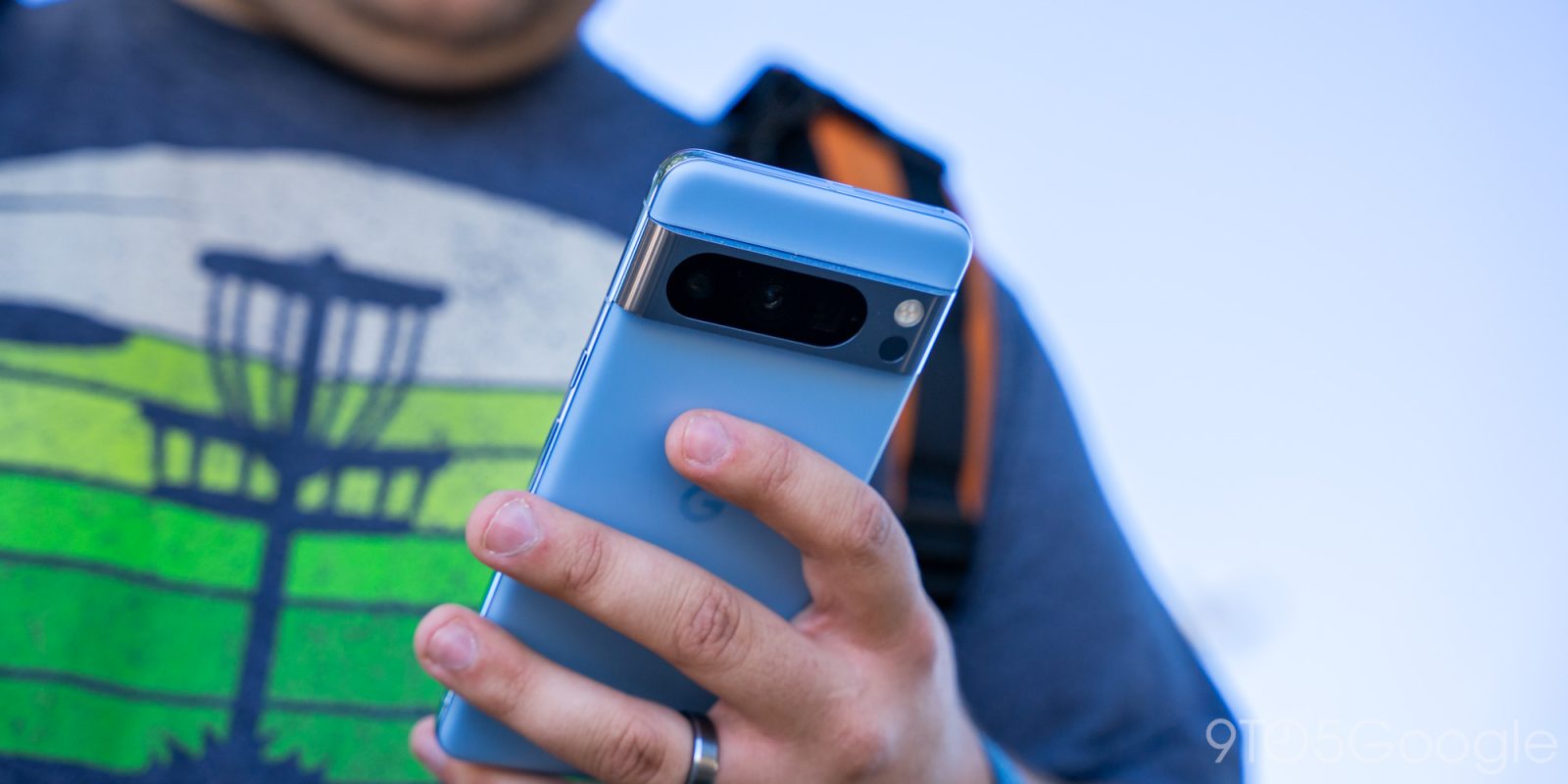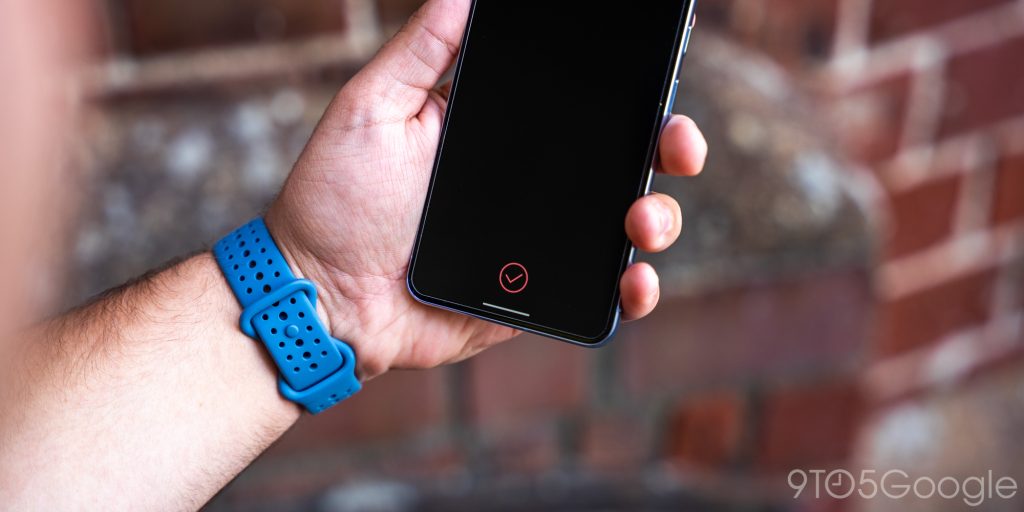
Biometrics have made it way more conveinent to unlock our smartphones, but there’s a debate on if face, or fingerprint unlock is the better solution. Many Android brands have taken the approach of “why not both,” adding both face and fingerprint unlock to their devices, but Google’s Pixel is the only one that’s done it correctly.
This issue of 9to5Google Weekender is a part of 9to5Google’s rebooted newsletter that highlights the biggest Google stories with added commentary and other tidbits. Sign up here to get it delivered to your inbox early!
Fingerprint unlock has been available on Android for about a decade now, and Apple has also offered it since 2013’s iPhone 5S. But while the iPhone moved over to “Face ID” a few years ago, fingerprint sensors are still the name of the game on Android, they’re just now found underneath the display. Which one is “better” really comes down to a matter of preference, but we’ve never really seen any smartphones truly integrate both.
That’s largely because it’d be cost prohibitive to do both properly. A fingerprint sensor is, of course, a hardware component that’s dedicated to recognizing your fingerprint. It serves no other purpose than that. Over on the iPhone (and Google’s Pixel 4 series), a series of cameras, sensors, and an IR projector serve to ensure facial recognizable is not only accurate, but reliable and secure. Anyone can do facial recognition with just a camera, but it’s been shown time and time again to be horribly insecure.
Despite the insecure nature of camera-based face unlock, that hasn’t stopped many Android brands from offering the functionality. It’s been offered by OnePlus and Samsung for years and, while it’s not as insecure as it once was, it’s still not good enough to be considered secure by Android. As such, all you can do with this is unlock your device. If an app requires a secure unlock, like a financial app, Google Wallet, or a password manager, it will resort to your fingerprint instead.
The only exception to that rule is the Google Pixel 8 series. There, Google uses sophisticated software tricks and a selfie camera with autofocus (which is annoyingly rare on Android phones) to create face unlock that’s secure enough for those apps, and all while also offering an optical fingerprint scanner too.

That on its own is reason enough for why Google is the only one that’s gotten this combination right, but it goes beyond that.
The experience of using both face and fingerprint unlock on a Pixel is way better than other devices. That’s something I’ve been reminded of lately while using the OnePlus 12 and Samsung Galaxy S24 Ultra we recently reviewed. On those devices, face and fingerprint unlock don’t work together. They fight each other.
As I said in both of those reviews:
If you have both turned on, the phone will respond to whichever is recognized first. But if you reach for the fingerprint sensor and the face unlock kicks in, the fingerprint just doesn’t work, which means you then have to switch to swipe to unlock the device. It’s rather frustrating!
This often leads to a complete stop to the unlocking process. It’s a minor inconvenience in all reality, but one that doesn’t need to exist.
Why?
Because Pixel shows you can do this better.
On a Pixel, face unlock and fingerprint unlock work completely harmoniously. If you use the fingerprint sensor and it recognizes you, you’re in. But if face unlock happens to recognize you first, the area where you’d use the fingerprint sensor just turns into a button which also unlocks the phone. It’s completely seamless.
Should OnePlus and Samsung just copy Google’s implementation? While it’d be a better experience, I would argue they shouldn’t. That’s because, unlike Google, face unlock on OnePlus and Galaxy devices is still inherently insecure. As such, that swipe almost serves as a reminder that, when you get to a secure app, you’re going to need to use your finger.
This Week’s Top Stories
Pixel Watch 3 will get a much bigger size
As we first reported earlier this year, the Pixel Watch 3 will be getting a bigger size, and this week we revealed just how big that will be. Pixel Watch 3 will likely be available in the same 41mm size today, but we also now know that a bigger 45mm option is coming.
We also reported this week that Google is working on a new Chromecast with Google TV.
MWC 2024
This past week saw MWC 2024 where Google hosted several big Android announcements, the OnePlus Watch 2 launched, some phones such as Xiaomi 14 and Honor Magic 6 Pro debuted globally, and more. Check out our coverage below.
- Google Messages will let you chat with Gemini
- Google Maps for Wear OS adds public transit directions
- OnePlus Watch 2 goes official for $299 with Wear OS 4 and 100-hour battery
- Here’s the Samsung Galaxy Ring [Gallery]
- Xiaomi 14 and 14 Ultra launch globally starting at €999
- Tecno Pova 6 Pro has a 6,000 mAh battery and some fun lights on the back
- Honor Magic 6 Pro launches globally with AI features, 180MP zoom camera, more
- Motorola will use Corning Gorilla Glass in all of its smartphones starting this year
- I flew to Europe and forgot the OnePlus Watch 2’s charger – here’s how long it lasted
- Hands-on: The Xiaomi 14 Ultra delivers my favorite ‘slab’ phone hardware in ages
- Hands-on: The era of cheap foldables is upon us [Gallery]
- Google Pixel 8 series named 2023’s ‘Best Smartphone’ with award at MWC
More Top Stories
- Google Maps adds ‘Glanceable directions while navigating’ setting
- Fuchsia version 16 rolling out to Nest Hub devices, here’s what’s new
- Photomath is officially Google’s latest app on the Play Store
- Samsung ‘working to’ support Galaxy Ring on all Android phones, but not iPhone
- Google app gives its Search and Lens shortcuts a fresh new look [Gallery]
- Microsoft Copilot can now replace Google Assistant or Bixby on your phone
- Samsung now lets you demo Galaxy AI features on your own phone
- Galaxy Z Fold 6 variant could come as an ‘Ultra’ model instead of budget
- Qualcomm confirms Snapdragon 8 Gen 4 coming in October
From the rest of 9to5
9to5Mac: Apple’s FineWoven cases are so bad Amazon had to add a label
Electrek: Ford officially launches Tesla Supercharger access, free adapter now available to order
9to5Toys: MSI’s new Claw gaming handheld with Intel Core Ultra chips goes up for pre-order from $699
ConnectTheWatts: Should workplace exercise be mandatory?
FTC: We use income earning auto affiliate links. More.

 1 month ago
34
1 month ago
34









 English (US)
English (US)